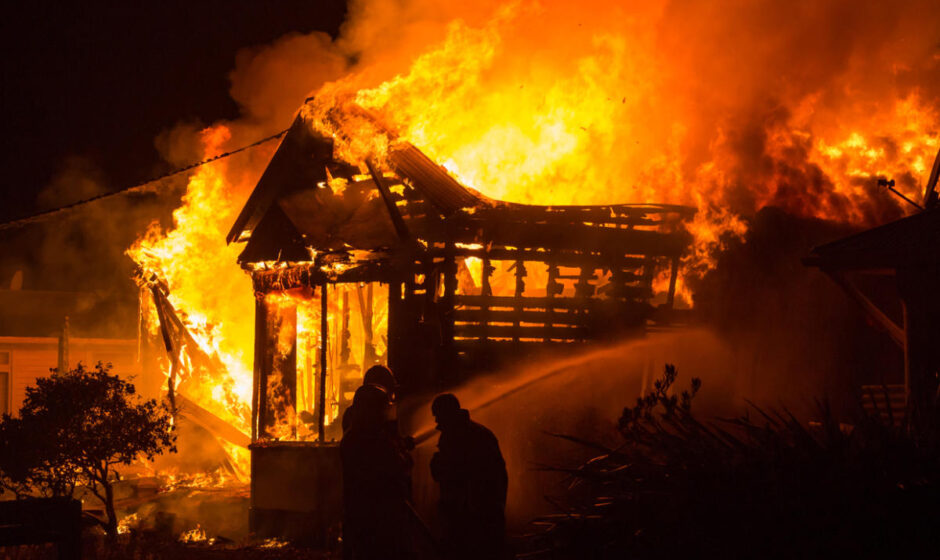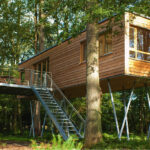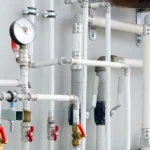One of the most terrible incidents that can happen to the owner of a country house is a fire. Damage or loss of property, home, or even injury and death of people is scary. It seems that we are all adults and understand the danger of fire, we know the precautions.
The main factor in the fire of a country house, and not only that, is human carelessness. It is she who is behind the thrown cigarette butt, improperly installed chimney , faulty wiring. Let’s take a closer look at the four main causes of fires.
Reason one: careless handling of fire
Although, of course, for owners of country houses, stoves seem to be the greatest danger: often either the heating in the cottage is stove-based, or there is a fireplace in the living room, or there is a stove in the bathhouse. However, according to statistics, careless handling of fire accounts for the largest number of fires – 35%.
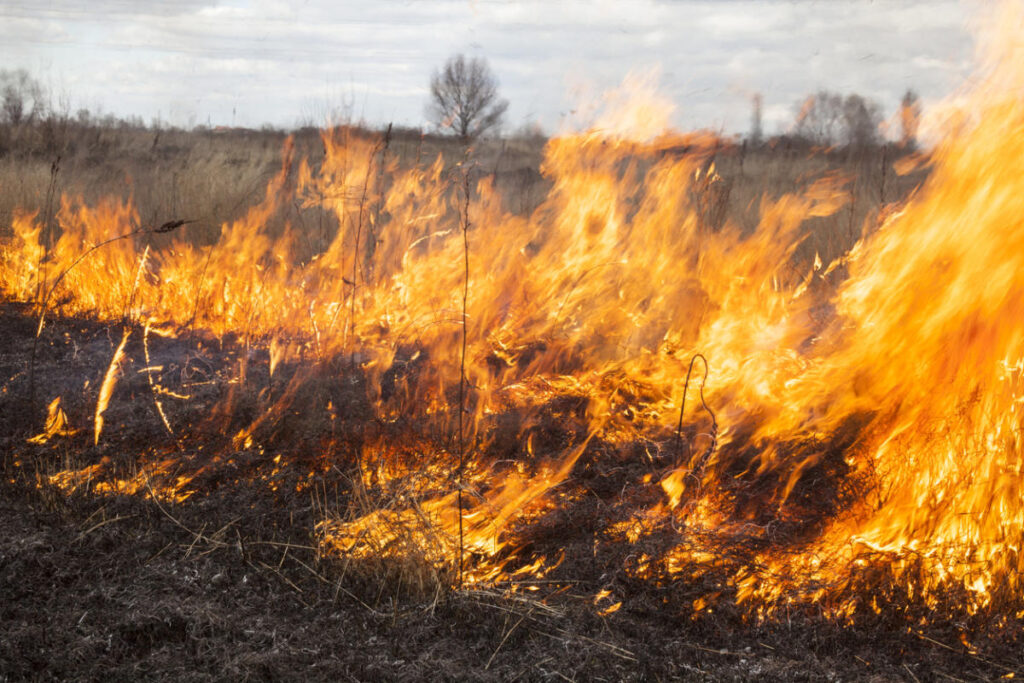
Don’t set fire to dry grass in the spring!
Fires lit in the “wrong” places and left unattended, grass burning in the spring, burning of garbage, and pranks of children with matches can cause fires not only of an individual country house but also of entire settlements. Smoking is another root cause of the fire. Unfortunately, it is not obvious to many. However, according to the statistics, it is very common.
A thrown-smoldering cigarette butt in the hot season is dangerous not only in the forest. Smoking in bed, as well as when drunk, especially contributes to fires – a modern cigarette continues to smolder, even if the person does not smoke it.

Don’t smoke in bed!
If you have a gas stove, make sure that curtains, towels, and other easily flammable items are kept away from open flames. It’s better not to leave them on the stove at all, even when turned off.
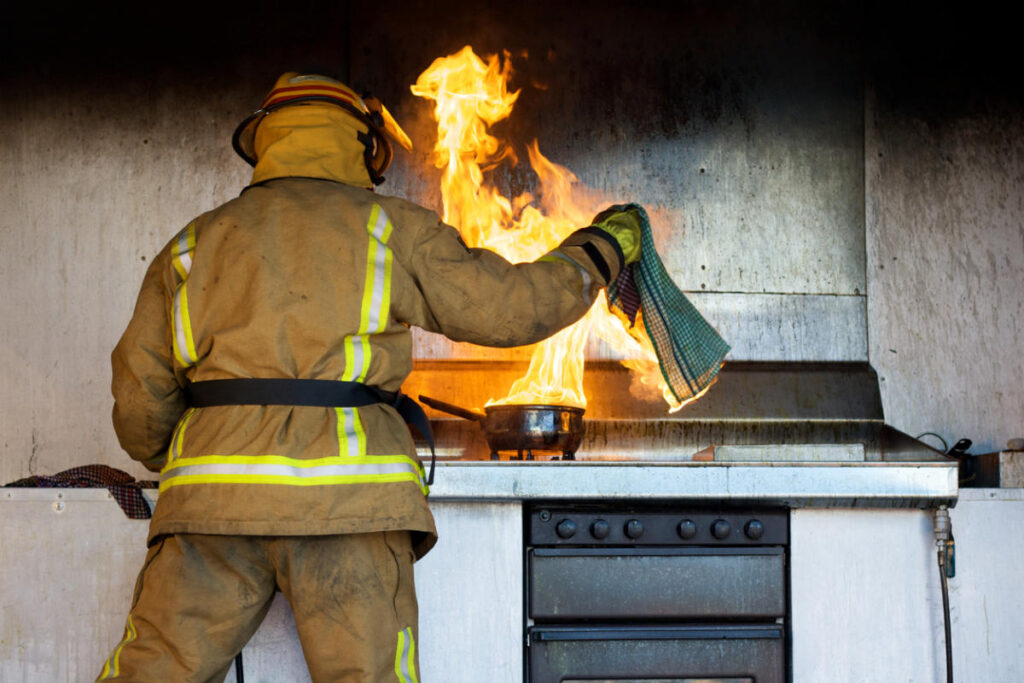
Remove flammable objects from open fire.
Lighting using kerosene lamps, torches, or candles can be a source of fire. Don’t forget about this when planning a romantic dinner in a country house on New Year’s Eve. In general, fireworks and fire shows at a party with alcohol can turn fun into trouble. During the holidays, up to 95% of those killed and injured in the fire were intoxicated. However, on weekdays, alcohol also makes a good catch of fire victims: about 60% of all victims.

The second reason: is stove heating and fireplaces
The main factors for fires associated with stoves and fireplaces are:
- faulty stove – with cracks in the masonry and broken doors;
- errors when installing a stove, fireplace, and chimney. This could be a failure to maintain fire clearances or the use of inappropriate insulation.
- use of homemade metal stoves that do not meet fire safety standards.
Stoves and fireplaces must be equipped with a pre-furnace sheet made of non-combustible materials: metal, stone, or ceramic tiles. If you have an open fireplace, do not leave it unattended, and do not have young children supervise the operation of the stove or fireplace.
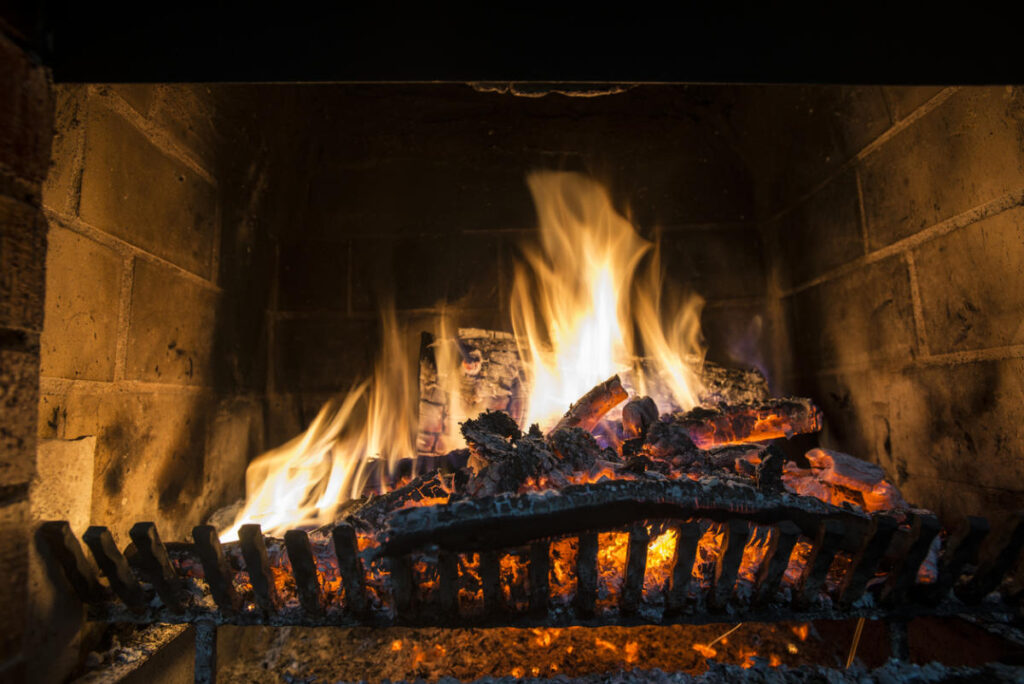
Do not leave a fireplace with an open firebox unattended
When installing stoves and fireplaces, it is necessary to observe fire separations (distances between a source of high temperature and structures made of combustible materials prescribed by fire regulations) or use thermal insulation materials. Thermal insulation prevents heat transfer, acting as thermal resistance. In the case of a fire-cutting device, air serves as a heat insulator that prevents heat transfer. In other cases, thermal insulation is made from materials with high thermal resistance and, as a result, low thermal conductivity. The stove, fireplace insert, and chimney elements get quite hot during operation. Therefore, thermal insulation must not only prevent heat transfer but also be made of non-combustible materials that are not destroyed by high temperatures. One of them is mineral (basalt) wool.

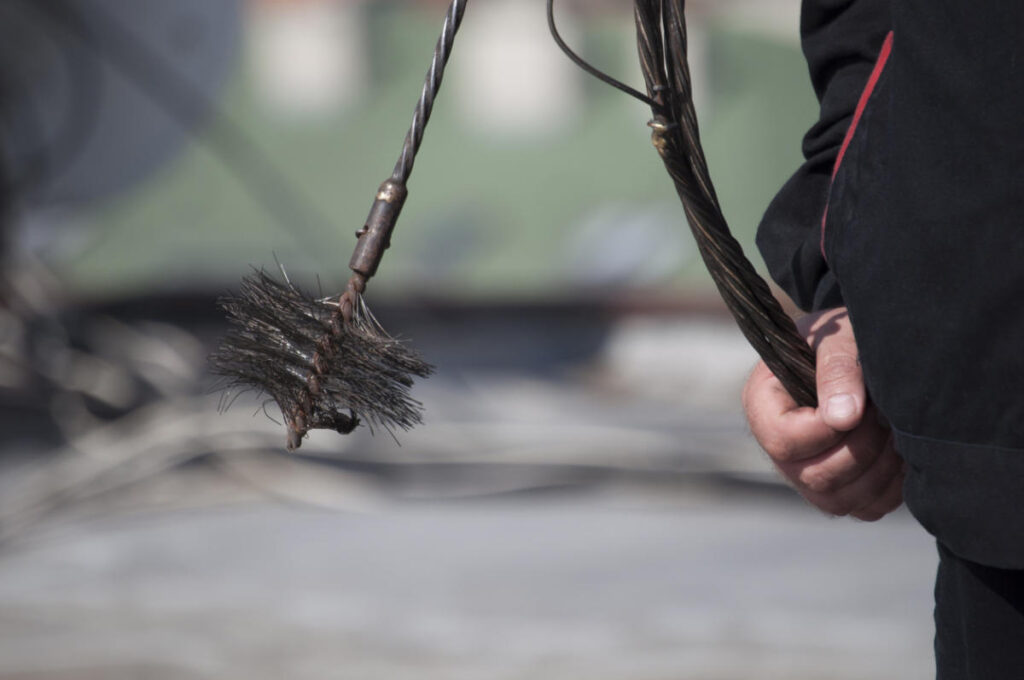
You need to call a chimney sweep at least once a year.
You need to clean the chimney at least once a year if the combustion occurs irregularly (for example, a fireplace). And if the stove is used constantly, then the smoke ducts must be cleaned at least once every three months. Do not light solid fuel in a stove or fireplace with gasoline or other flammable liquids, and do not burn appliances that are not designed for this with coal. If the temperature is too high, metal fireboxes can become deformed and become a fire hazard.
The third reason: is faulty electrical appliances and improper handling of them
Electricity itself is dangerous. Improper operation of electrical appliances, their disrepair, faulty wiring – all this leads to fires. And the percentage of fires due to a malfunction in the home’s electrical system is also quite high: 18%.
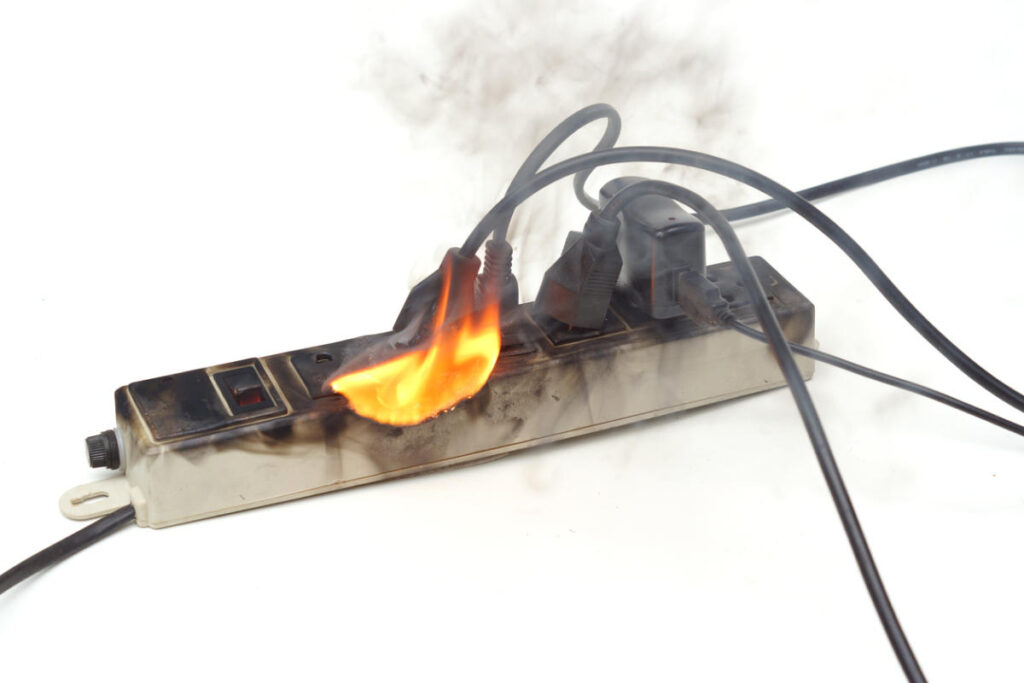
Operate electrical appliances correctly
The very first thing that should be excluded is the failure of electrical wiring. Old aluminum conductors become brittle over time and can no longer withstand the heat caused by the passage of electric current.
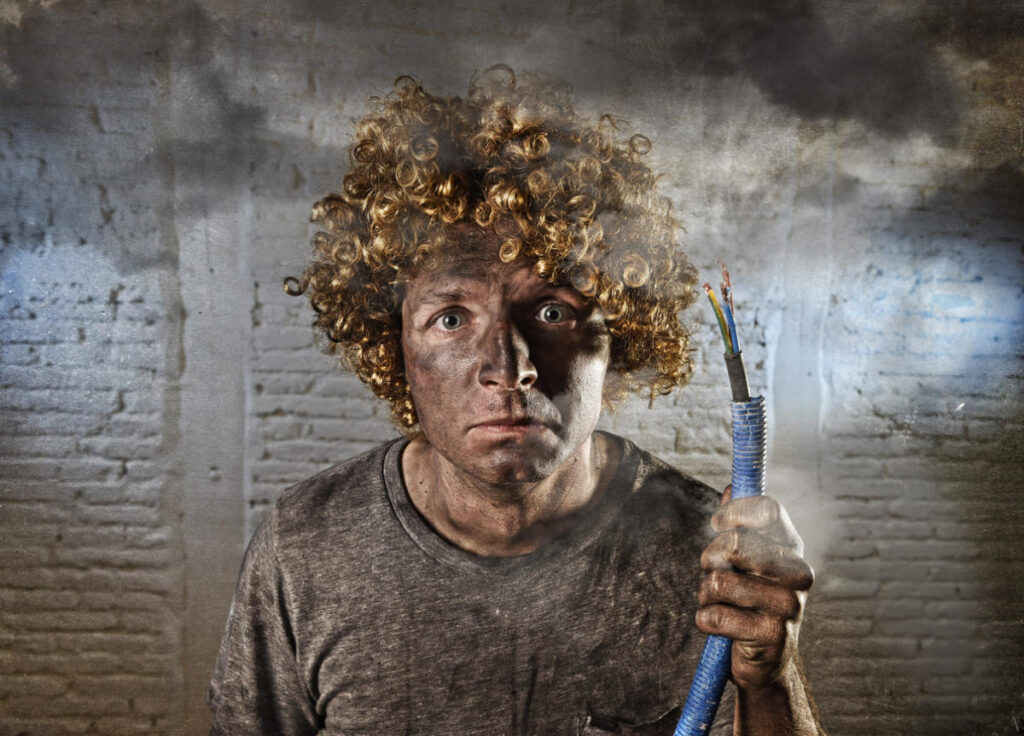
Replace the old electrical wiring
If your country house has just such aluminum wiring, and you simultaneously use at least two powerful electrical appliances (for example, an electric kettle and an electric water heater), you should carry out a preventive inspection as soon as possible, or better yet, replace it completely. When selecting wires and cables, take into account the power ratio of the installed devices and the cross-section of the conductor in the wire. If it is less than the calculated power, the generated heat will not have time to dissipate. As a result, the wire can overheat and ignite flammable trim parts. Look at the photo below: sound familiar? Plugging many electrical appliances into one power outlet through extension cords and tees leads to overload and again to increased heating.
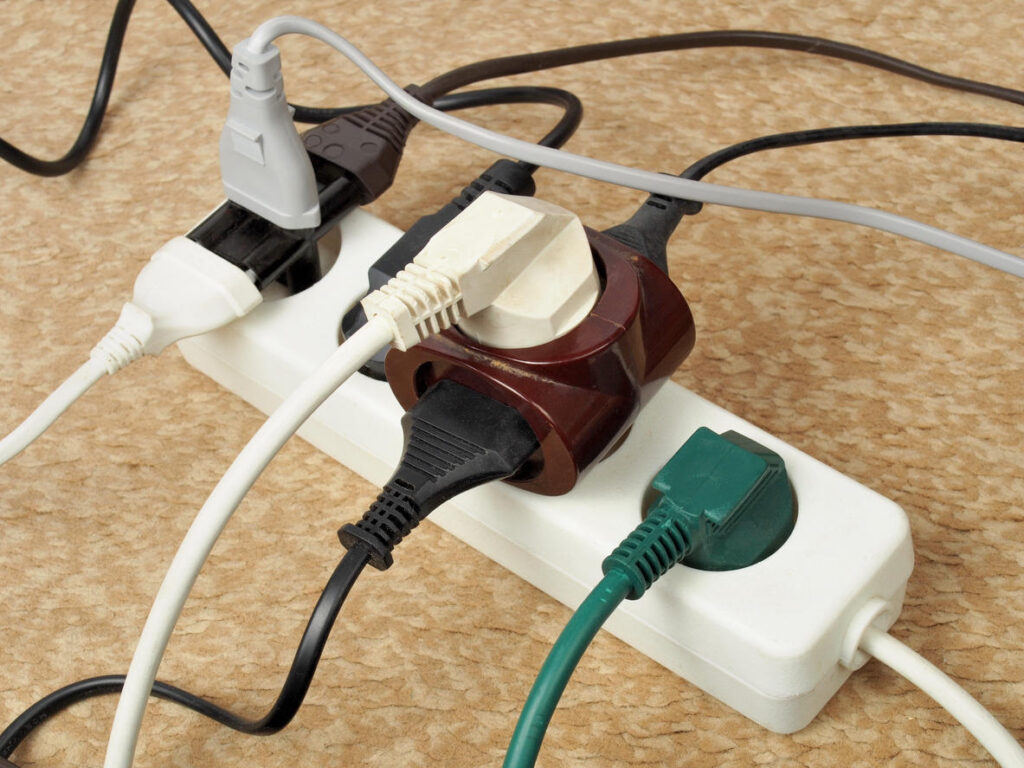
Do not overload the electrical outlet
The most common manifestation of problems in the electrical network is a short circuit. When the wires are short-circuited, the current increases sharply, instantaneous heating of the conductors occurs, the metal conductors melt and a large amount of heat is released. A short circuit can occur, for example, when the cable is punctured (insulation broken) by a nail or self-tapping screw. If the electrical system of the house is equipped with circuit breakers, the protection is triggered, and only the device itself or the device that caused the short circuit burns out (fails). If there are no circuit breakers, electric current continues to flow at the short circuit. As a result, high temperatures cause ignition of structural elements and finishing, that is, a fire.
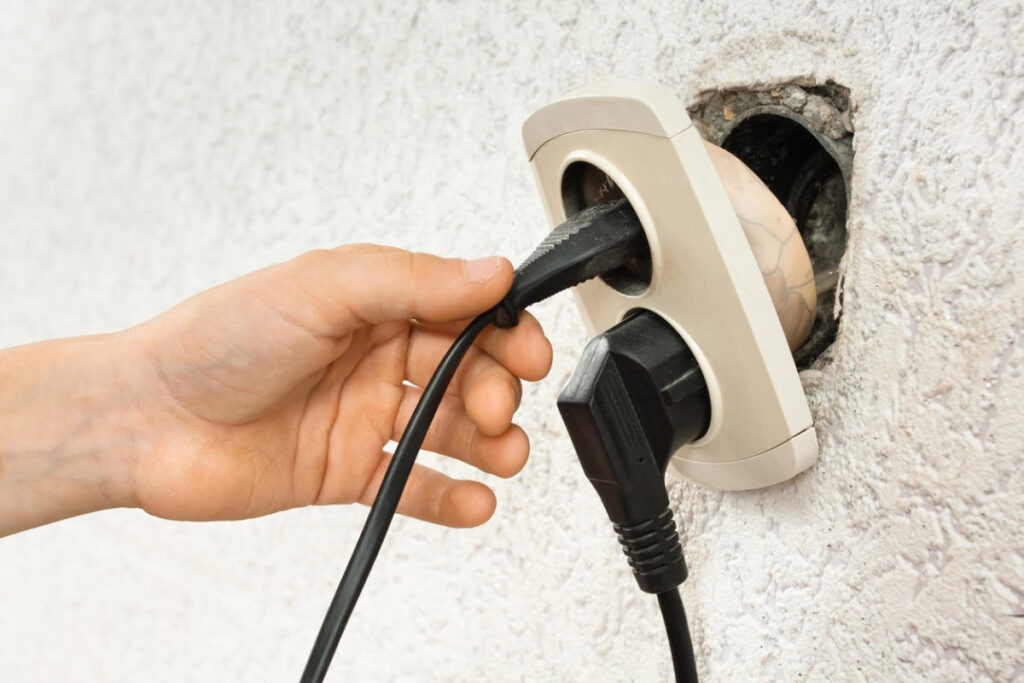
A faulty socket is a possible cause of a fire.
Overheating occurs when the plug of the device does not make tight contact in the terminals of the electrical socket, between the lamp base and the contact tab of the socket, if they are faulty, as well as in places where the wires in the junction boxes are incorrectly twisted. In this case, the resistance increases, which leads to overheating, but the current does not increase abruptly, so the automatic protection does not work.
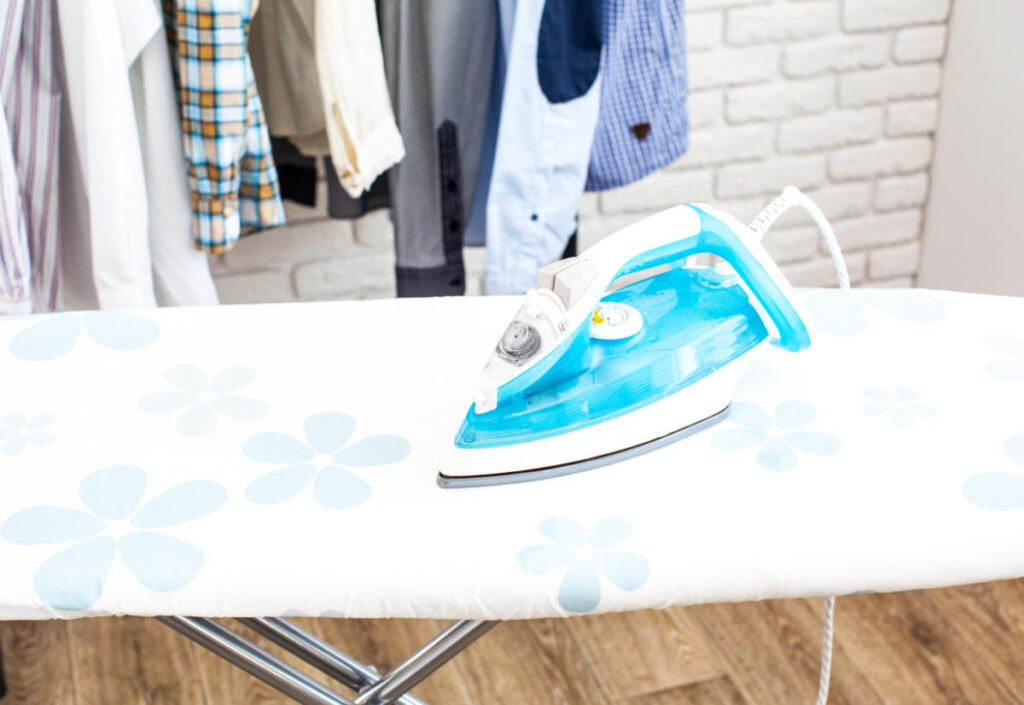
Do not leave switched-on electrical appliances unattended.
Do not leave electrical appliances unattended. A switched-on iron forgotten on an ironing board, a boiled-out electric kettle without a shut-off thermostat, an idling electric stove, or homemade heaters – all this can cause a fire.
Fourth reason: non-compliance with fire safety rules during construction
One way to protect yourself from fire is to not forget, for the sake of design or economy, the requirements of fire safety regulations. These requirements consist of observing fire breaks when building a site, installing firewalls, using non-flammable or low-flammable materials during construction, as well as using high-quality non-combustible insulation to protect structures. Solutions for comprehensive fire protection of building structures can be found using the example of rock wool products.

